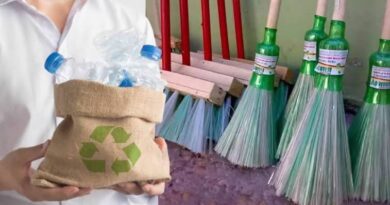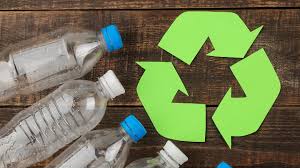Types of Wastewater and Motivational Factors for Recycling/Reuse
Reuse of wastewater for domestic and agricultural purposes has been occurring since historical times. However, planned reuse has gained importance only two or three decades ago, as the demands for water dramatically increased due to technological advancement, population growth, and urbanization, which put great stress on the natural water cycle.
Reuse of wastewater for water-demanding activities, which, so far consumed limited freshwater resources is, in effect, imitating the natural water cycle through engineered processes. Several pioneering studies have provided the technological confidence for the safe reuse of reclaimed water for beneficial uses.
While initial emphasis was mainly on reuse for agricultural and non-potable the recent trends prove that there are direct reuse opportunities to applications closer to the point of generation. There are also many projects that have proved to be successful for indirect or direct potable reuse.
All the case studies presented in this unit point towards the fact that wastewater could serve as a viable alternative source of water in future.
Types of Wastewater
Wastewater can be recycled/reused as a source of water for a multitude of water-demanding activities such as agriculture, aquifer recharge, aquaculture, firefighting, flushing of toilets, snow melting, industrial cooling, parks and golf course watering, formation of wetlands for wildlife habitats, recreational impoundments, and essentially for several other non-potable requirements.
Potential reuse of wastewater depends on the hydraulic and biochemical characteristics of wastewater, which determine the methods and degree of treatment required.
While, agricultural irrigation reuses, in general, require lower quality levels of treatment, domestic reuse options (direct or indirect potable and non- potable) reuses need the highest treatment level. Level of treatment for other reuse options lie between these two extremes.
Reuse for Irrigation
Agricultural irrigation has, by far, been the largest reported reuse of wastewater. About 41 percent of recycled water in Japan, 60% in California, USA, and 15% in Tunisia are used for this purpose. In developing countries, application on land has always been the predominant means of disposing municipal wastewater as well as meeting irrigation needs.
In China, for example, at least 1.33 million hectares of agricultural land are irrigated with untreated or partially treated wastewaters from cities. In Mexico City, Mexico, more than 70 000 hectares of cropland outside the city are irrigated with reclaimed wastewater. Reuse has advantages as well as disadvantages at each level.
Irrigation reuse of wastewater can be for application on agricultural crops, woodlots and pastures, or landscape and recreational areas. The choice of type of irrigation application generally depends upon the location and quantity of wastewater available for reuse. Potential constraints in this type of application are:
Surface and groundwater pollution, if poorly planned and managed
Marketability of crops and public acceptance
Effect of water quality on soil, and crops and
Public health concerns related to pathogens.
However, many research studies have shown that in addition to providing a low-cost water source, other side benefits of using wastewater for irrigation include increase in crop yields, decreased reliance on chemical fertilizers, and increased protection against frost damage in the ice region.
Modern reuse for irrigation of agricultural purposes in developed countries was the result of two pioneering studies that were conducted in California during the 1970s and 1980s. The Pomona virus study and the Monterey wastewater reclamation study for agriculture.
The Pomona virus study was conducted in Los Angeles in an effort to determine the degree of treatment necessary to minimize potential transmission of waterborne diseases via surface water.
The study concluded that complete virus removal is possible through tertiary treatment of wastewater by either direct filtration or activated carbon followed by adequate disinfection, thus proving the possibility for reclamation of “microbiologically risk free” water from wastewater.
The results of this study have opened up the possibilities of wastewater reuse for various applications. Since the virus removal through treatment has been established by Pomona study, investigations of Monterey study concentrated on virus survival on crops and in soils in the field.
Irrigation of Landscape and Recreational Area
Application of reclaimed wastewater for landscape irrigation includes use in public parks, golf courses, urban green belts, freeway medians, cemeteries, and residential lawns. This type of application is one of the most common applications of wastewater reuse worldwide.
Examples of such uses can be found in USA, Australia, Japan, Mexico and Saudi Arabia among others. These schemes have been operating successfully in many countries for many years without attracting adverse comments.
This type of application has the potential to improve the amenity of the urban environment. However, such schemes must be carefully run to avoid problems with community health.
Because the water is used in areas that are open to public, there is potential for human contact, so reuse water must be treated to a high level to avoid risk of spreading diseases. Other potential problems of application for landscape irrigation concern aesthetics such as odour, insects, and problems deriving from build-up of nutrients
Domestic and Industrial Reuse
Reuse of wastewater for purposes other than irrigation may be either for:
Industrial reuse
Non-potable purposes
Indirect potable purposes or
Direct potable purposes.
Industrial Reuse
Industrial reuse of reclaimed wastewater represents major reuse next only to irrigation in both developed and developing countries. Reclaimed wastewater is ideal for many industrial purposes, which do not require water of high quality.
Often industries are located near populated areas where centralised treatment facilities already generate reclaimed water. Depending on the type of industry, reclaimed water can be utilised for cooling water make-up, boiler feed water, process water etc.
Cooling water make-up in a majority of industrial operations represents the single largest water usage. Compared to other purposes such as boiler feed and process water, the water quality requirements for industrial cooling is not generally high.
Consequently, cooling water make-up presents a single largest opportunity for reuse. In Australia, considered the “driest continent” on earth, cooling water make-up would be attractive from the viewpoint of substantially lessening the demand for potable water by power stations.
Operational problems encountered in cooling water recirculation systems are irrespective of the quality of make-up water used. They are scaling, corrosion, biological growth, and fouling.

A major problem associated with reuse of wastewater will be biofilm growth in the recirculation system. Presence of microorganisms (pathogens or otherwise) with nutrients such as nitrogen and phosphorus, in warm and well-aerated conditions, as found in cooling water towers, create ideal environments for biological growth.
Non-Potable Domestic Reuse
Adequately treated wastewater meeting strict quality criteria, can be planned for reuse for many non-potable purposes. Non-potable reuse leads to reduction of water for consumption from other sources, and a reduction in wastewater flow rate.
So, non-potable reuse schemes can avoid adverse environmental consequences associated with conventional water sources and wastewater disposal systems. Non-potable domestic reuse can be planned either within single households/building, or on a larger-scale use through a reticulation system meant only for use for non-potable purpose.
Systems for individual households/buildings /facilities:
In many parts of the world, it has become apparent that it may not be possible to provide a centralized sewage collection facility for all the households, due to both geographic and economic reasons.
Wastewater from individual dwellings and community facilities in such unsewered locations is usually managed by on-site treatment and disposal systems.
Although a variety of onsite systems have been used, the most common system consists of a septic tank for the partial treatment of wastewater, and a subsurface disposal field for final treatment and disposal.
By segregating the “gray” sullage from “black” toilet wastes, potential for reuse with minimal treatment within the household enhances manifold.
There are several different schemes for reusing gray water at the household levels. Where the gray water is not separated from toilet wastes, improvements in the quality of treated wastewater can be brought about by many alternative systems.
One of the alternatives includes intermittent and re-circulating granular-medium filters. The effluent from a re-circulating filter has been found to be of such high quality, it can be used in a variety of applications, including drip irrigation.
In Japan, the major in-house gray water reuse system is the hand basin toilets, which uses a hand basin set on the top of the cistern, so the water from hand washing forms part of the refill volume for toilet flushing. Hand basin toilets are reportedly installed in most new houses in Japan.
Large-scale non-potable reuse through a dual reticulation system:
A dual reticulation system is the wastewater reuse concept for urban areas where a centralized sewage collection system is in place, on a large scale.
This system supplies treated wastewater to houses, and commercial/official/shopping complexes through a separate water supply network, to be used primarily for toilet flushing, and irrigation of lawns.
Thus, households will have two water supply lines, one for potable and human-contact use purposes, and the second for non- potable, non-contact uses such as toilet flushing, use in the yards Issues in Wastewater Reuse and Recycling, and the Future of Water Reuse gardens etc., hence the name “dual reticulation system.”
Indirect Potable Reuse
Indirect potable reuse of treated wastewater may occur unintentionally, when wastewater is disposed into a receiving body of water that is used as a source of potable water supply.
It can also be through planned schemes, such as that of Cerro del la Estrella sewage treatment plant in Mexico City.
Here, treated wastewater which meets the criteria for potable reuse except for total dissolved solids, is diluted by water from other sources to meet these criteria, and used for potable purposes.
Another planned indirect potable reuse can be through groundwater recharge of treated wastewater.
One of the earliest indirect reuse of treated wastewater can be traced back to a pilot study of the 1930s, in the city of Los Angeles.
The study reported that secondary treated wastewater treated in a long chain of tertiary treatment processes including super chlorination, ferric chloride coagulation, sedimentation, sand filtration, and activated carbon filtration, has been infiltrated into ground up to 7–5 m above groundwater table in a dry river bed 2–5 km upstream from collection galleries for the municipal water system.
In Arizona, USA, many cities and towns recharge their aquifers with urban wastewater to obtain “recharge credits,” which allows them to continue pumping their groundwater wells for municipal water supplies. Recharged water is recovered for use in drinking, irrigation and industrial purposes.
Direct Potable Reuse
Direct potable reuse means adding treated wastewater directly into the normal drinking water distribution system. Though the idea of such a wastewater reuse may be repugnant to many, technologically, direct potable reuse of treated wastewater has been feasible for many years.
A classic example of wastewater reuse for direct potable purposes in an emergency happened in the 1950s in the town of Chanute, Kansas, USA. The Neosho River in eastern Kansas served as the sole water source of Chanute.
Due to continuous drought for five years, surface flow of the river ceased in 1956. After considering all other alternatives, the river was dammed just below the town’s sewage outfall, and the treated wastewater was used to fill the potable water intake pool.
For five months, the city reused its sewage, circulating it some eight to fifteen times. Thanks to the elaborate sewage treatment as well as raw water, the bacteriological qualities were met.
An epidemiological survey showed fewer cases of stomach and intestinal illness during recycle than in the following winter when Chanute was back to use as river water.
Another famous example widely quoted for direct potable reuse of reclaimed water is the reclamation scheme adopted in Windhoek, capital city of Namibia, which was initiated in 1968.
The city of Windhoek approached the limits of its conventional drinking water sources during the 1960s due to severe water shortage, as groundwater and surface water sources in the vicinity of the city had been fully harnessed.
Therefore, in 1968, the city adopted a water reclamation scheme from domestic wastewater to supplement the potable water to the city. The scheme was well publicised and there has been no public opposition.
The reclamation scheme was founded on the three basic premises for reclamation to succeed: diversion of industrial and other potentially toxic wastewater from the main wastewater stream, wastewater treatment to produce an effluent of adequate and consistent quality, and effluent treatment to produce acceptable potable water.
In addition, it was considered that it is of utmost importance to develop a multi-barrier treatment sequence as a safeguard against pathogens.
The industrial wastewaters were diverted to be treated in separate small treatment plants, and only the industries that do not generate wastewater were allowed in areas were effluents merged with domestic sewage.
The system went through a succession of modifications and improvements over the year. The wastewater is treated in two separate, consecutive treatment plants to potable standard. The first is the conventional biological treatment plant (activated sludge process) at Gammas to treat raw wastewater.
This wastewater is discharged into a series of maturation ponds, from where the effluent gravitates directly to the water reclamation plant at Goreangab.
The water reclamation plant consists of alum coagulation, dissolved air floatation, lime dosing, sedimentation, sand filtration, breakpoint chlorination, activated carbon filtration, and final chlorination.
Wastewater Sludge Reuse
Wastewater sludge is the solid/semi-solid substance, concentrated form of mainly organic, and some inorganic impurities (pollutants), generated as a result of treatment of wastewater.
For any growing modern city, it is necessary to expand its sewage collection system to cater to the needs of the growing urban areas and its population.
With the expansion of sewerage system comes the ever-increasing problem of how best the sludge generated in wastewater treatment facilities can be disposed.
Disposal methods once used for sludge management, such as ocean disposal, are not environmentally appropriate.
Though it is traditionally suggested that the sludge can be applied on land as soil conditioner and as fertilizer, there are many issues involved in handling and transportation, and odour nuisance, which are of concern.
Experience in Europe and the USA have shown that land application/reuse of sludge options are the most promising ones that benefit the society.
Read Also : Issues in Wastewater Reuse and Recycling, and the Future of Water Reuse
Sludge can be reused to reclaim parched land by application as soil conditioner, and also as a fertilizer in agriculture. Deteriorated land areas, which cannot support the plant vegetation due to lack of nutrients, soil organic matter, low pH and low water holding capacity, can be reclaimed and improved by the application of sludge.
Sewage sludge has a pH buffering capacity resulting from an alkalinity that is beneficial in the reclamation of acidic sites, like acid mine spoils, and acidic coal refuse materials. Netherlands, Sweden, and Spain in Europe use more than 60% of sludge for agricultural purposes.
Their experience shows that by following regulations and strict adherence to standards, adverse environmental effects of sludge application for agricultural purpose could be reduced to a minimum, thereby giving confidence to those who rely on them.



